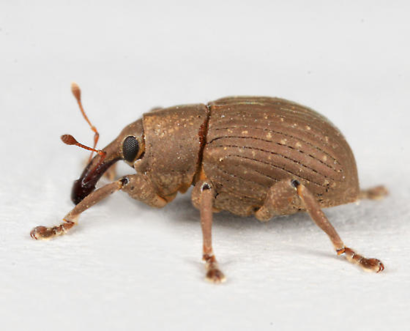| Waterhyacinth (Pontederia crassipes) |

|
IPRL results for two biological control agents released on Waterhyacinth (Pontedaria crassipes)

Waterhyacinth weevil, Neochetina eichhorniae

Waterhyacinth planthopper, Megamelus scutellaris
The Invasive Plant Research Laboratory has been investigating Integrated Pest Management (IPM) methods on waterhyacinth, combining chemical and biological control for this weed. One recent finding was that attack by biological control agents makes waterhyacinth more susceptible to herbicides. In that study, the feeding by the biological control agents N. eichhorniae and M. scutellaris reduced waterhyacinth biomass by 15.2%, and herbicides alone reduced biomass by 29.2%. However, when biocontrol and chemical control were combined, biomass was reduced by 99.4%. Feeding by the insects likely weakened the plants to the point that even a reduced rate of herbicide was as effective as the currently used, higher operational rates. A simple logistic model predicted that the presence of the biological control insects will reduce the number of herbicide re-treatments from five in a year to just two, or a 60% reduction. In addition, the pattern of spraying may increase the effect of the insects by providing internal refuges within sprayed mats whereby insect attack would be more damaging to any remaining plants through increased densities as the insects move from sprayed to unsprayed plants.

no biological control present

biological control present
Megamelus scutellaris drone release

For more details please reference links to publications below:
Current levels of suppression of waterhyacinth in Florida USA by classical biological control agents
Persistence of biological control agents in waterhyacinth following herbicide application
Field Guide for the Biological Control of Weeds in Eastern North America/waterhyacinth
